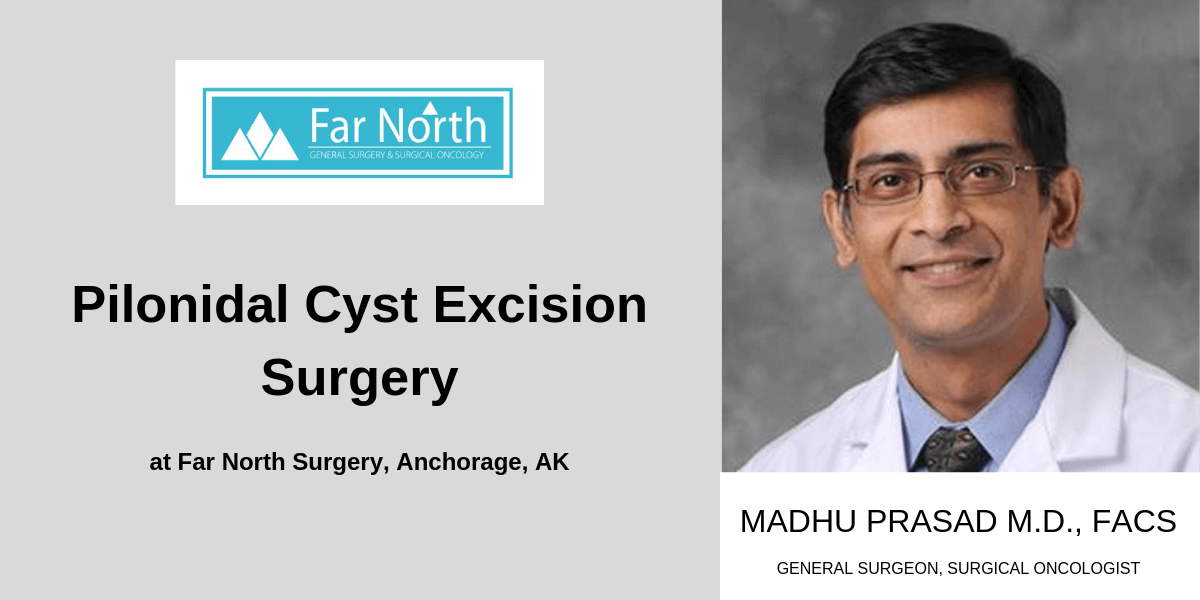


Pilonidal cyst excision surgery is needed to remove a cyst at the top of the crease of your rear end. Your surgeon makes a small cut to remove the cyst and tissues around it. Dr. Madhu Prasad, a trusted general surgeon in Anchorage, AK has years of experience with successful and convincing outcomes.
A pilonidal cyst is an abnormal pocket in the skin, which generally contains skin debris and hair. It is located near the tailbone at the top of the cleft of the buttocks. Mostly, people who sit or drive for a long time suffer from pilonidal cysts.
It is caused by skin debris and hair that gets trapped in the pores of the skin in the upper cleft of the buttock. The other causes of the pilonidal cyst are:
If the pilonidal cyst is infected or inflamed, you may have these symptoms near the affected area of the skin:
You need to undergo surgery if you have a pilonidal cyst that is causing infection or pain. A pilonidal cyst that is not showing any symptoms does not require treatment. Nevertheless, be sure to consult with your physician to determine if you need surgery.
Your surgeon will ask you about your symptoms and conduct a physical examination to diagnose your pilonidal cyst.
Local anesthesia is used during the surgery. Your surgeon makes a small cut into the cyst and drains it. He or she then removes the hair follicles and tissues around it. The area may or may not be packed with gauze depending on how much tissue is removed.
You may stay in the hospital for 1 to 2 days or go home the same day, depending on your condition and the procedure.
Your recovery time depends on the outcome of your surgery. If your incision is left open, it may take a few weeks to several months to heal. If your incision is closed with stitches, it can take 4 weeks to recover completely.
At Far North Surgery, we use the latest surgical tools and techniques to diagnose and remove pilonidal cysts. Our team is experienced and delivers result with shorter recovery times and provides quality care to our patients.